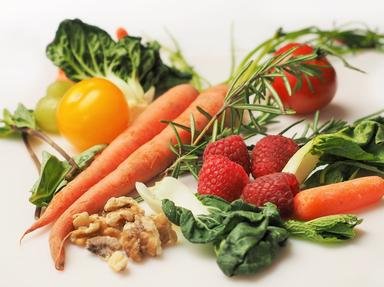Quiz Answer Key and Fun Facts
1. Which type of grape, purple in colour, is the predominant type used for grape juice in the US?
2. Which dark-coloured bramble fruit of the genus Rubus, grows wild in English hedgerows during the Autumn months, and is often mixed with apples to make delicious pies?
3. What aromatic, dark purple berries are used to make the English soft drink Ribena and the French liqueur "crème de cassis"?
4. Which of these stone fruits when dried become prunes?
5. There are many things red onions are good for including being used as a purple dye at times. What happens to them when they are cooked?
6. In which area of the world do we find the first reference to the cultivation of the Eastern carrot (purple or red in color) in the 10th Century CE?
7. In Great Britain and the south of Italy, which small vegetable is sometimes erroneously referred to as a purple cauliflower?
8. In what part of the world were purple potatoes originally cultivated?
9. My Indian cookbook has a recipe for brinjal pickle, but my greengrocer doesn't have anything called brinjal. What is another name for the purple vegetable for which I am looking?
10. Which of these purple foods is traditionally served braised with butter and apples as a side dish called Rotkohl to accompany Sunday roast beef in Germany?
Source: Author
gracious1
This quiz was reviewed by FunTrivia editor
WesleyCrusher before going online.
Any errors found in FunTrivia content are routinely corrected through our feedback system.
